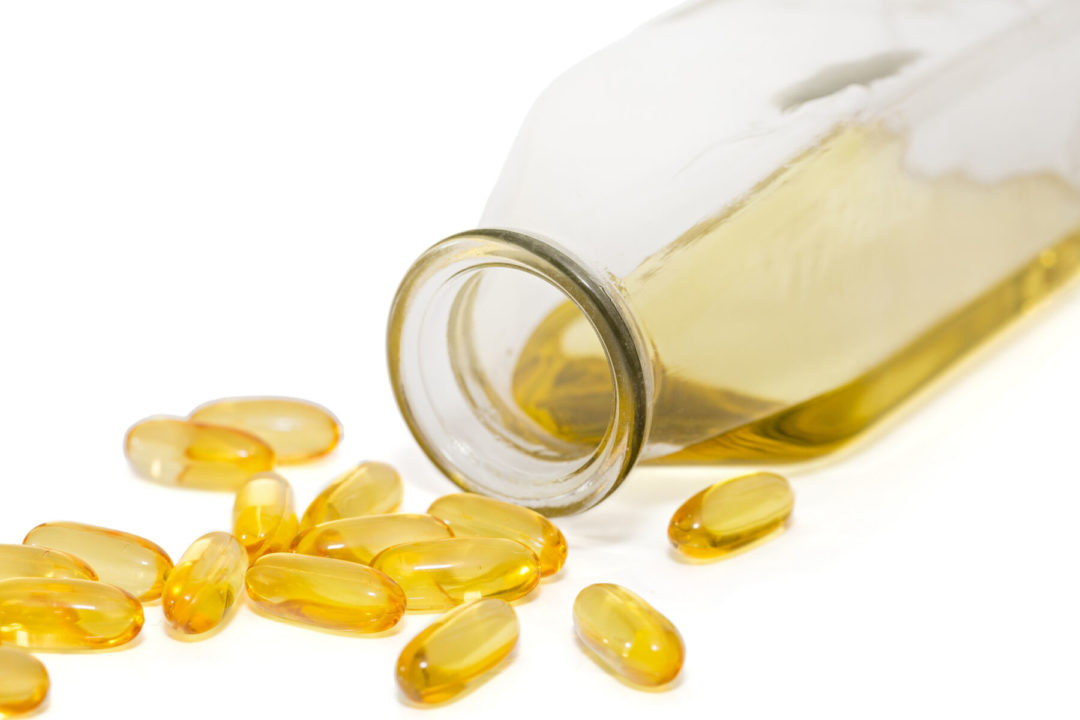Which brings us to the second reason I always recommend fish oil for their omega-3 fats, which is this:Almost no one gets enough of them from diet alone(9,10).
That’sespeciallytrue when you eat processed food.
Let me explain.
A Critically Important (But Little Known) Benefit of Fish Oil
One of the mostimportant benefits of fish oil supplements is rarely mentioned in the popular press:the ability of fish oil to neutralize the potential damage that can be caused by consuming too much omega-6.In fact, the problem of not consuming enough omega-3 is made significantly worse by the fact that almosteveryoneis consuming waytoomany of the fats known as omega-6s (11,12). And that’s probably true for you as well, even if you don’t know it. (More on that in a minute.)
Omega-3s, Omega-6s, and Inflammation
Both omega-6 and omega-3 are part of thepolyunsaturatedfamily of fats, which are generally thought to be good. Both omega-6 and omega-3 are consideredessential fats because the body can’tmakethem, so it’sessentialthat youeatthem. But like many things in the body—sodium and potassium, for example—they have to be in balance, like a seesaw in equilibrium, or a perfectly balanced “scale of justice.” In fact, the balance between omega-6 and omega-3 in the human diet is the subject of a ton of research precisely because it predicts so much about health outcomes (13).While both omega-6 and omega-3 are essential, they have very different functions. Omega-6s are considered “pro-inflammatory,” meaning the body uses them to create inflammatory biochemicals, while omega-3s serve the opposite purpose, meaning the body uses them to make anti-inflammatory chemicals. It may surprise you to find that you needbothinflammatory and anti-inflammatory compounds in your body, but you do, and here’s why:
Inflammatory chemicals released by immune system cells are part of your immune system’s first responder team. Think about it—you get a splinter in your finger and the area gets swollen. White blood cells rapidly travel to the site of the injury and surround the wound to make sure no dangerous microbes cause an infection. Your skin may get red and ugly for a minute, but it’s all part of the healing process, just like having a temperature when you’re sick. Without the ability of the immune system to respond with its inflammatory army, we’d all be toast.
“Omega-6 fatty acids produce strongly inflammatory or 'reactive' eicosanoids while omega-3 fatty acids produce less inflammatory or even anti-inflammatory eicosanoids,” writes Andrew Stoller, M.D., in his book,The Omega-3 Connection, written when he was an assistant professor of psychiatry at Harvard Medical School (14).
So basically, you have aninflammatory“army” and you have an “anti-inflammatory” army. You need to keep those armies in tip-top shape and “fund” them with the right foods and fats. And like siblings in a family, they need to be treated fairly and evenly. What you don’t want to do is to lavish plenty of funds on one army and neglect the other. But that is exactly what we do when weover-consume omega-6 andunder-consume omega-3. Because we eat about 16-20 times as much omega-6 than we do omega-3, we’re essentially giving ourpro-inflammatory army about 16 to 20 times as much fuel (resources) as we’re giving to ouranti-inflammatory army (15).
No wonder there is an epidemic of inflammation in this country and that inflammation accompanies, causes, or is the result of every single chronic disease you can name.
Why the Imbalance? All those “healthy vegetable oils” we’ve been taught to consume instead of more traditional fats (butter, eggs, meat, milk) are turning out to be the biggest sources of omega-6 in our diet,andthey’re in everything—certainly every form of baked goods and processed foods you can think of. Manufacturers even proudly advertise on the label that their products are made with soy oil or canola oil, bothgenetically modified seed oilswith high omega-6 content and not much else to recommend them. In fact, I challenge you to find a single grocery store item that comes in a box that does not contain either soy, canola, corn, safflower or what’s generically called “vegetable oil.”
So besides all the wonderful things omega-3s do on their own,their very consumption helps to correct the terribly unhealthy ratio of omega 6:omega 3 in our diet. According to extensive international research, the ideal dietary ratio should be between 1:1 and 4:1, no more. Due to the consumption of processed food and the use of “vegetable oils” in our kitchens, we currently consume a ratio of omega 6 to omega 3 of between 16:1 and 25:1(16).
Again—this is not to say omega-6 is bad, just that we get too much of it,andthat we’re consuming the worst kind (highly processed, GMO cooking oils). Adding fish oil supplements to your routine and reducing the amount of processed food and vegetable oil you eat on a daily basis, would go a long way towards correcting the silent pandemic of inflammation which harms us in so many different ways.
All Fish Oil Is Not Alike
When it comes to fish oil, sourcing is important. Always buy from a trusted source that independently verifies their fish oil is free from mercury and other toxins (Barlean’shas been doing this for decades). Fish oil also comes in a variety of forms, from gels to pure oil to the newer (and very tasty) emulsified forms such asBarlean's Seriously Delicious Omegas. Research shows that the emulsified form of fish oil is as or even more absorbable than the oil form (17), and it’s probably the easiest way on the planet to get kids to take fish oil. I personally haven’t met a kid or an adult who could resist the Key Lime Pie version!Most of the major health organizations recommend a minimum daily requirement of about ½ gram of omega-3 a day, but I personally believe that’s far too little for optimal health. Most of my functional nutritionist colleagues themselves take (and recommend to their families and clients) much higher doses, typically 2 or even 3 grams a day of combined EPA-DHA. It’s way easier to get that amount from straight fish oil than it is from capsules, and it’s easier still when it comes in a delicious, emulsified form.
References:
- https://www.bmj.com/company/newsroom/fish-oil-supplements-linked-to-lower-risk-of-heart-disease-and-death/
- https://stanfordhealthcare.org/medical-clinics/cancer-nutrition-services/reducing-cancer-risk/omega-3-fatty-acids.html
- https://www.nature.com/articles/ejcn2013197
- https://www.ncbi.nlm.nih.gov/pmc/articles/PMC7362115/
- https://www.arthritis-health.com/blog/difference-between-omega-3-and-omega-6-and-knee-arthritis-pain
- https://omegaquant.com/is-omega-3-brain-food-three-new-studies-suggest-the-answer-is-yes/
- https://www.ncbi.nlm.nih.gov/pmc/articles/PMC6116096/
- https://www.ncbi.nlm.nih.gov/pmc/articles/PMC4404917/
- https://naturemed.org/are-you-getting-enough-omega-3s/#:~:text=As%20many%20as%2095%25%20of,to%20function%20at%20its%20best
- https://www.ncbi.nlm.nih.gov/pmc/articles/PMC3992162/
- https://chriskresser.com/how-too-much-omega-6-and-not-enough-omega-3-is-making-us-sick/
- https://www.ncbi.nlm.nih.gov/pmc/articles/PMC4808858/
- https://pubmed.ncbi.nlm.nih.gov/12442909/
- https://www.simonandschuster.com/books/The-Omega-3-Connection/Andrew-L-Stoll-M-D/9780743217200https://www.amazon.com/Omega-3-Connection-Groundbreaking-Anti-depression-Program/dp/0684871386/ref=sr_1_2?dchild=1&keywords=%22the+omega-3+connection&qid=1618792432&s=books&sr=1-2
- https://pubmed.ncbi.nlm.nih.gov/17045449/
- https://www.karger.com/Book/Home/249214
- https://www.ncbi.nlm.nih.gov/pmc/articles/PMC2701654/










